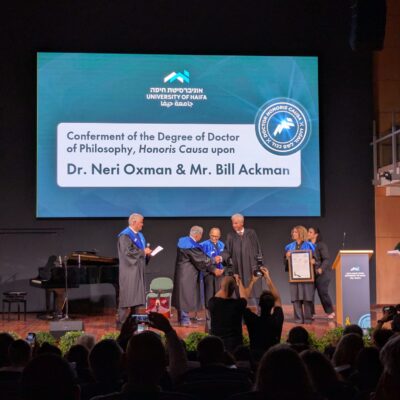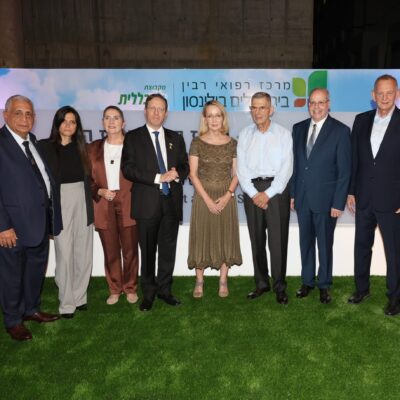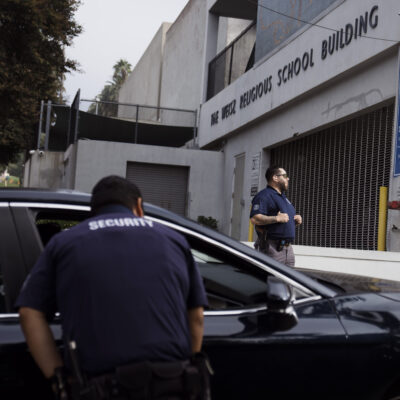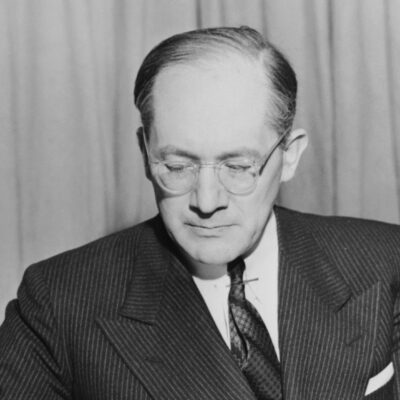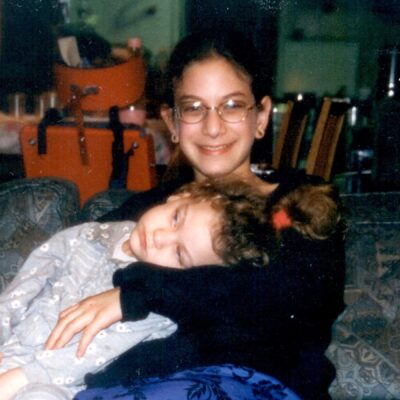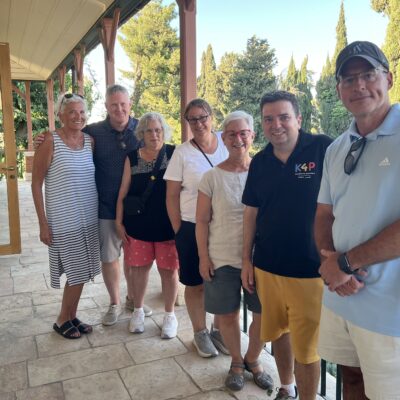Opinion
MORE THAN A ‘MITZVAH DAY’
Saving Jewish education through service learning
Years ago, I saw a photograph of a protester at a demonstration holding up a sign that read, “I learned this in Hebrew school.” I remember thinking at the time, “Wow! Where did that person go to Hebrew school?” At my Hebrew school, I learned a little about Jewish holidays, history and basic Hebrew decoding; but despite attending a Reform synagogue committed to tikkun olam (repairing the world), I don’t recall anything in my educational experience that called me to stand up against injustice.
Since being ordained eight years ago, I’ve worked as a rabbi/educator in both synagogue and organizational settings. I’ve shared with colleagues that one of my fears is to spot the name of a former student in a newspaper headline highlighting a crime or inappropriate action they’ve committed. On the flip side, I’ll feel as if I succeeded as an educator if my students become adults who are generous, compassionate and seek out justice — not just because that is something good people do, but because that is what it means to be Jewish. Most parents I speak to have shared similar sentiments about how their primary goal for giving their children a Jewish education, aside from making Jewish friends, is for their children to become mensches.
If creating mensches is in fact a central goal of Jewish education, then we need to craft educational experiences that teach our students these important Jewish values within real-world contexts. My experience over the past two years running a program called Changing the World Together (CWT), has taught me that this model lies within service-learning programs for our youngest learners. From opening our students’ eyes to big problems in the world to learning better manners, CWT is helping our students learn to be better humans, and they are connecting the necessity of being a good person with Judaism.
The structure for CWT began to take shape in the spring of 2022, when a Judaism Your Way participant named Jamie shared with me that she would love to find a way to meet other Jewish families, volunteer and have her third-grade daughter learn Jewish values, all in one place. Before this point, Judaism Your Way didn’t offer any educational opportunities for elementary students, instead focusing our efforts on our Be Mitzvah program. Jamie’s desire turned on a lightbulb in my brain, reminding me of wisdom I’d learned from organizations like CLAL and Upstart — that the best ideas often come from people with a need. Perhaps addressing Jamie’s pain point offered a path to creating mensch-y Jews?

A little background
Sally Berman, author of Service Learning: A Guide to Planning, Implementing and Assessing Student Projects, defines service learning as “in-context learning that connects specific educational goals with meaningful community service.” She explains that the term was coined in the late 1960s by Robert Sigmon and William Ramsey to describe “a link between authentic community service, intentional academic learning and reflection,” but that the roots of service learning can be traced to John Dewey and his emphasis on the importance of reflection in creating learning that sticks. “Service learning is brain-compatible learning,” Berman writes. “Because the learning is done in a real-world context, students’ brains construct meaning from the learning and remember it effortlessly.”
In addition to internalizing the content of service-learning programs, students also deepen their emotional intelligence through practicing cooperation, empathy and respect, writes Berman. They also feel empowered by contributing to solving a real-world problem and feel that they are integral to their community.
What do you need most?
My colleague, Amy Atkins, and I set to work dreaming up an educational program for elementary school-aged children that combined community building, service work and Jewish education. With Amy’s background leading environmental service-learning experiences over the previous 20 years and my experience as a participant, we knew from the beginning that we were interested in a service-learning program.
Jewish service learning is nothing new. Organizations like Avodah, American Jewish World Service and Repair the World have been using this model and deeply impacting lives for decades. The catch is that these organizations work with adults. In fact, it’s often very challenging to even find volunteer opportunities for youth. Most organizations have a minimum age requirement, typically anywhere from 14-18 years old. Another challenge is families can usually only volunteer on weekends, when most organizations are closed.
Luckily, we realized a workaround: Many organizations have projects that can be done off-site by even the youngest members of our communities.
Before each CWT program, Amy and I coordinate with an organization in our area whose work reflects the Jewish value we are focused on studying for the year. We ask the organization to identify a project that will help them, even if it’s not something flashy.
For example, this year we were exploring hachnasat orchim, (hospitality), and we recently partnered with Jewish Family Services in Denver to support their work resettling refugees. They told us that what they needed most were supplies to outfit bathrooms for incoming refugee families. Assembling baskets of these essentials might not have been as fun as spray painting old tires to create a garden (something we did last spring), but this project met a real need. It also pushed our students to think about the things they take for granted and how refugees truly have to start over from scratch. (As an added bonus, it gave me the opportunity to explain to these impressionable children what a toilet brush is and that their toilet does not clean itself. I certainly didn’t get that kind of derech eretz lesson in my Hebrew school experience.)
More than a ‘Mitzvah Day’
At first glance, it may sound like this program is not very different from a mitzvah day; but in my experience, a mitzvah day is a one-off program that includes little context about the organization and population being served and how its all connects to Judaism, and no time is given for reflection.
In every CWT program, we root our service work in first learning about an important Jewish value. Then, we explore the work of our partner organization and why we chose the organization in connection with the value we are investigating. Only after this learning do we do our service project. Finally and perhaps most importantly, we ensure time for reflection so that the students and their parents can process and internalize what they learned during the day.
Last year, the Jewish Education Project released a report demonstrating that religious school enrollment has declined by almost 50% since 2000. At a time when more and more people are choosing not to give their children a Jewish education, CWT has required a waitlist both years. This year we even offered two simultaneous cohorts in different parts of Denver and Boulder in order to accommodate more families.
After offering this program for two years, it’s clear families who otherwise would not be participating in Jewish education are excited about this type of learning. It turns out that Jamie wasn’t the only parent interested in a program that combined meeting other families, learning Jewish values and service work.
But even more important to me than attendance is the program’s impact on our students. At the end of last year, for example, one couple shared that the CWT session when we partnered with a secular food bank opened their son’s eyes to the issue of food insecurity — in lieu of gifts at his 10th birthday party, he even asked his friends to bring two boxes of their favorite cereal to donate to a food pantry instead. In my own home, I’ve seen the impact as well. After exploring Jewish teachings about how to be welcoming, my kids insisted that we have snacks ready when their friends arrive for a playdate just like Abraham welcomed his guests with food.
CWT also provides an opportunity for the adults attending the program with their children to deepen their Jewish knowledge and commitment to tikkun olam. Though our program only meets quarterly, that is four more times a year than most of these families would be engaging in Jewish learning if they weren’t participating in CWT.
Many of the families Judaism Your Way serves are interfaith families, for instance, and I’ve noticed that the parents who do not come from Jewish backgrounds are more comfortable participating in CWT than attending religious services or more traditional Jewish educational opportunities. The service-learning model offers an environment where the entire family unit can meaningfully participate.
Finally, learning about Judaism through CWT isn’t reserved solely for our families — the non-Jewish organizations that partner with us are also impacted. At a time when antisemitism is skyrocketing, it feels more important than ever that we are getting out in the wider communities and demonstrating that we are committed to social justice because it is demanded of us as Jews.
Right now is the season when many rabbis and educators are planning for the next school year. I know many of my colleagues are toying with how to tweak their religious school programs to entice families to either join or stick around. For those who find themselves in this boat, I hope you’ll seriously consider incorporating a service-learning model.
Rabbi Amanda Schwartz (JTS Class of 2016) is the family life director for Judaism Your Way in Denver, Colo., where she manages all programs and educational opportunities geared toward families with children 18 and under.

 Add EJP on Google
Add EJP on Google